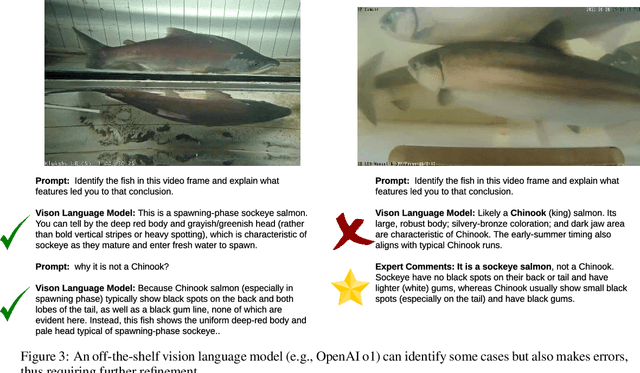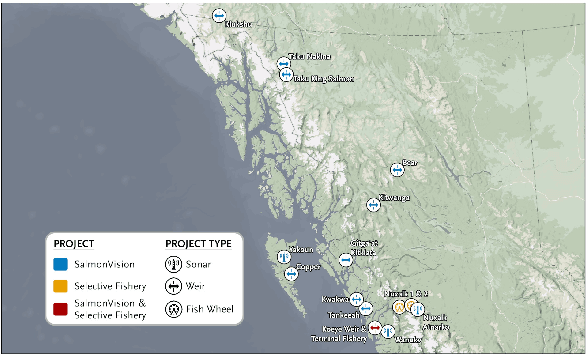Xue Liu
Charlie
Generative Flow Networks for Personalized Multimedia Systems: A Case Study on Short Video Feeds
Aug 23, 2025Abstract:Multimedia systems underpin modern digital interactions, facilitating seamless integration and optimization of resources across diverse multimedia applications. To meet growing personalization demands, multimedia systems must efficiently manage competing resource needs, adaptive content, and user-specific data handling. This paper introduces Generative Flow Networks (GFlowNets, GFNs) as a brave new framework for enabling personalized multimedia systems. By integrating multi-candidate generative modeling with flow-based principles, GFlowNets offer a scalable and flexible solution for enhancing user-specific multimedia experiences. To illustrate the effectiveness of GFlowNets, we focus on short video feeds, a multimedia application characterized by high personalization demands and significant resource constraints, as a case study. Our proposed GFlowNet-based personalized feeds algorithm demonstrates superior performance compared to traditional rule-based and reinforcement learning methods across critical metrics, including video quality, resource utilization efficiency, and delivery cost. Moreover, we propose a unified GFlowNet-based framework generalizable to other multimedia systems, highlighting its adaptability and wide-ranging applicability. These findings underscore the potential of GFlowNets to advance personalized multimedia systems by addressing complex optimization challenges and supporting sophisticated multimedia application scenarios.
Generative AI for Multimedia Communication: Recent Advances, An Information-Theoretic Framework, and Future Opportunities
Aug 23, 2025Abstract:Recent breakthroughs in generative artificial intelligence (AI) are transforming multimedia communication. This paper systematically reviews key recent advancements across generative AI for multimedia communication, emphasizing transformative models like diffusion and transformers. However, conventional information-theoretic frameworks fail to address semantic fidelity, critical to human perception. We propose an innovative semantic information-theoretic framework, introducing semantic entropy, mutual information, channel capacity, and rate-distortion concepts specifically adapted to multimedia applications. This framework redefines multimedia communication from purely syntactic data transmission to semantic information conveyance. We further highlight future opportunities and critical research directions. We chart a path toward robust, efficient, and semantically meaningful multimedia communication systems by bridging generative AI innovations with information theory. This exploratory paper aims to inspire a semantic-first paradigm shift, offering a fresh perspective with significant implications for future multimedia research.
Beyond Semantic Similarity: Reducing Unnecessary API Calls via Behavior-Aligned Retriever
Aug 20, 2025Abstract:Tool-augmented large language models (LLMs) leverage external functions to extend their capabilities, but inaccurate function calls can lead to inefficiencies and increased costs.Existing methods address this challenge by fine-tuning LLMs or using demonstration-based prompting, yet they often suffer from high training overhead and fail to account for inconsistent demonstration samples, which misguide the model's invocation behavior. In this paper, we trained a behavior-aligned retriever (BAR), which provides behaviorally consistent demonstrations to help LLMs make more accurate tool-using decisions. To train the BAR, we construct a corpus including different function-calling behaviors, i.e., calling or non-calling.We use the contrastive learning framework to train the BAR with customized positive/negative pairs and a dual-negative contrastive loss, ensuring robust retrieval of behaviorally consistent examples.Experiments demonstrate that our approach significantly reduces erroneous function calls while maintaining high task performance, offering a cost-effective and efficient solution for tool-augmented LLMs.
Prompting Wireless Networks: Reinforced In-Context Learning for Power Control
Jun 06, 2025Abstract:To manage and optimize constantly evolving wireless networks, existing machine learning (ML)- based studies operate as black-box models, leading to increased computational costs during training and a lack of transparency in decision-making, which limits their practical applicability in wireless networks. Motivated by recent advancements in large language model (LLM)-enabled wireless networks, this paper proposes ProWin, a novel framework that leverages reinforced in-context learning to design task-specific demonstration Prompts for Wireless Network optimization, relying on the inference capabilities of LLMs without the need for dedicated model training or finetuning. The task-specific prompts are designed to incorporate natural language descriptions of the task description and formulation, enhancing interpretability and eliminating the need for specialized expertise in network optimization. We further propose a reinforced in-context learning scheme that incorporates a set of advisable examples into task-specific prompts, wherein informative examples capturing historical environment states and decisions are adaptively selected to guide current decision-making. Evaluations on a case study of base station power control showcases that the proposed ProWin outperforms reinforcement learning (RL)-based methods, highlighting the potential for next-generation future wireless network optimization.
Understanding 6G through Language Models: A Case Study on LLM-aided Structured Entity Extraction in Telecom Domain
May 20, 2025Abstract:Knowledge understanding is a foundational part of envisioned 6G networks to advance network intelligence and AI-native network architectures. In this paradigm, information extraction plays a pivotal role in transforming fragmented telecom knowledge into well-structured formats, empowering diverse AI models to better understand network terminologies. This work proposes a novel language model-based information extraction technique, aiming to extract structured entities from the telecom context. The proposed telecom structured entity extraction (TeleSEE) technique applies a token-efficient representation method to predict entity types and attribute keys, aiming to save the number of output tokens and improve prediction accuracy. Meanwhile, TeleSEE involves a hierarchical parallel decoding method, improving the standard encoder-decoder architecture by integrating additional prompting and decoding strategies into entity extraction tasks. In addition, to better evaluate the performance of the proposed technique in the telecom domain, we further designed a dataset named 6GTech, including 2390 sentences and 23747 words from more than 100 6G-related technical publications. Finally, the experiment shows that the proposed TeleSEE method achieves higher accuracy than other baseline techniques, and also presents 5 to 9 times higher sample processing speed.
Exploring Multimodal Foundation AI and Expert-in-the-Loop for Sustainable Management of Wild Salmon Fisheries in Indigenous Rivers
May 10, 2025



Abstract:Wild salmon are essential to the ecological, economic, and cultural sustainability of the North Pacific Rim. Yet climate variability, habitat loss, and data limitations in remote ecosystems that lack basic infrastructure support pose significant challenges to effective fisheries management. This project explores the integration of multimodal foundation AI and expert-in-the-loop frameworks to enhance wild salmon monitoring and sustainable fisheries management in Indigenous rivers across Pacific Northwest. By leveraging video and sonar-based monitoring, we develop AI-powered tools for automated species identification, counting, and length measurement, reducing manual effort, expediting delivery of results, and improving decision-making accuracy. Expert validation and active learning frameworks ensure ecological relevance while reducing annotation burdens. To address unique technical and societal challenges, we bring together a cross-domain, interdisciplinary team of university researchers, fisheries biologists, Indigenous stewardship practitioners, government agencies, and conservation organizations. Through these collaborations, our research fosters ethical AI co-development, open data sharing, and culturally informed fisheries management.
What, How, Where, and How Well? A Survey on Test-Time Scaling in Large Language Models
Mar 31, 2025Abstract:As enthusiasm for scaling computation (data and parameters) in the pretraining era gradually diminished, test-time scaling (TTS), also referred to as ``test-time computing'' has emerged as a prominent research focus. Recent studies demonstrate that TTS can further elicit the problem-solving capabilities of large language models (LLMs), enabling significant breakthroughs not only in specialized reasoning tasks, such as mathematics and coding, but also in general tasks like open-ended Q&A. However, despite the explosion of recent efforts in this area, there remains an urgent need for a comprehensive survey offering a systemic understanding. To fill this gap, we propose a unified, multidimensional framework structured along four core dimensions of TTS research: what to scale, how to scale, where to scale, and how well to scale. Building upon this taxonomy, we conduct an extensive review of methods, application scenarios, and assessment aspects, and present an organized decomposition that highlights the unique functional roles of individual techniques within the broader TTS landscape. From this analysis, we distill the major developmental trajectories of TTS to date and offer hands-on guidelines for practical deployment. Furthermore, we identify several open challenges and offer insights into promising future directions, including further scaling, clarifying the functional essence of techniques, generalizing to more tasks, and more attributions.
Enhancing Large Language Models (LLMs) for Telecommunications using Knowledge Graphs and Retrieval-Augmented Generation
Mar 31, 2025Abstract:Large language models (LLMs) have made significant progress in general-purpose natural language processing tasks. However, LLMs are still facing challenges when applied to domain-specific areas like telecommunications, which demands specialized expertise and adaptability to evolving standards. This paper presents a novel framework that combines knowledge graph (KG) and retrieval-augmented generation (RAG) techniques to enhance LLM performance in the telecom domain. The framework leverages a KG to capture structured, domain-specific information about network protocols, standards, and other telecom-related entities, comprehensively representing their relationships. By integrating KG with RAG, LLMs can dynamically access and utilize the most relevant and up-to-date knowledge during response generation. This hybrid approach bridges the gap between structured knowledge representation and the generative capabilities of LLMs, significantly enhancing accuracy, adaptability, and domain-specific comprehension. Our results demonstrate the effectiveness of the KG-RAG framework in addressing complex technical queries with precision. The proposed KG-RAG model attained an accuracy of 88% for question answering tasks on a frequently used telecom-specific dataset, compared to 82% for the RAG-only and 48% for the LLM-only approaches.
TransDiffSBDD: Causality-Aware Multi-Modal Structure-Based Drug Design
Mar 26, 2025Abstract:Structure-based drug design (SBDD) is a critical task in drug discovery, requiring the generation of molecular information across two distinct modalities: discrete molecular graphs and continuous 3D coordinates. However, existing SBDD methods often overlook two key challenges: (1) the multi-modal nature of this task and (2) the causal relationship between these modalities, limiting their plausibility and performance. To address both challenges, we propose TransDiffSBDD, an integrated framework combining autoregressive transformers and diffusion models for SBDD. Specifically, the autoregressive transformer models discrete molecular information, while the diffusion model samples continuous distributions, effectively resolving the first challenge. To address the second challenge, we design a hybrid-modal sequence for protein-ligand complexes that explicitly respects the causality between modalities. Experiments on the CrossDocked2020 benchmark demonstrate that TransDiffSBDD outperforms existing baselines.
Warmup Generations: A Task-Agnostic Approach for Guiding Sequence-to-Sequence Learning with Unsupervised Initial State Generation
Feb 17, 2025



Abstract:Traditional supervised fine-tuning (SFT) strategies for sequence-to-sequence tasks often train models to directly generate the target output. Recent work has shown that guiding models with intermediate steps, such as keywords, outlines, or reasoning chains, can significantly improve performance, coherence, and interpretability. However, these methods often depend on predefined intermediate formats and annotated data, limiting their scalability and generalizability. In this work, we introduce a task-agnostic framework that enables models to generate intermediate "warmup" sequences. These warmup sequences, serving as an initial state for subsequent generation, are optimized to enhance the probability of generating the target sequence without relying on external supervision or human-designed structures. Drawing inspiration from reinforcement learning principles, our method iteratively refines these intermediate steps to maximize their contribution to the final output, similar to reward-driven optimization in reinforcement learning with human feedback. Experimental results across tasks such as translation, summarization, and multi-choice question answering for logical reasoning show that our approach outperforms traditional SFT methods, and offers a scalable and flexible solution for sequence-to-sequence tasks.
 Add to Chrome
Add to Chrome Add to Firefox
Add to Firefox Add to Edge
Add to Edge